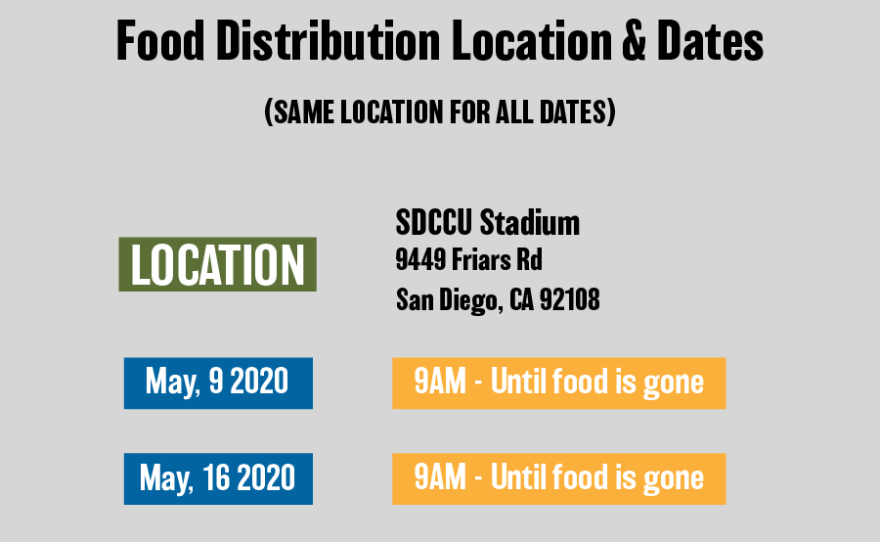Before the coronavirus pandemic hit San Diego, The Jacobs and Cushman San Diego Food Bank distributed about $250,000 a month in food to approximately 350,000 people who needed it.
Suddenly that wasn't nearly enough.
In the month of March the food bank distributed food to 550,000 to 600,000 people suddenly needing food assistance through 200 distribution sites, several non-profit partners, and a mobile food pantry which sets up where need emerges.
The food bank's usual order through the statewide Farm To Family program is about $1 million annually. The organization has had to triple that amount already this year.
The Farm to Family program works with farmers, ranchers, packers and shippers to get California farm products from the field to food banks throughout the state, including vegetables, fruit, grains, dairy, eggs and meat.
The local non-profit Feeding San Diego has also ramped up its food distribution. Like the Jacobs and Cushman San Diego Food Bank, Feeding San Diego has no eligibility requirements.
Feeding San Diego will be at the SDCCU stadium every Saturday in May distributing free boxes of food to families in need. The emergency distribution will begin at 9 a.m. on Saturday May 9 at 9 a.m. until the food is gone.

San Diego County's food assistance program, CalFresh (also known as SNAP and formerly called food stamps) has also seen changes. In April alone the county Department of Health and Human Services said it received 30,000 CalFresh applications.
Assmaa Elayyat, chief of eligibility operations for Health and Human Services said the county has reassigned workers to tackle the vetting of applicants and the 30% increase in cases they have received since mid-February.
Elayyet and James A. Floros, president and CEO of the Jacobs and Cushman San Diego Food Bank join Midday Edition on Wednesday to talk about meeting greatly increased demand for food assistance.








